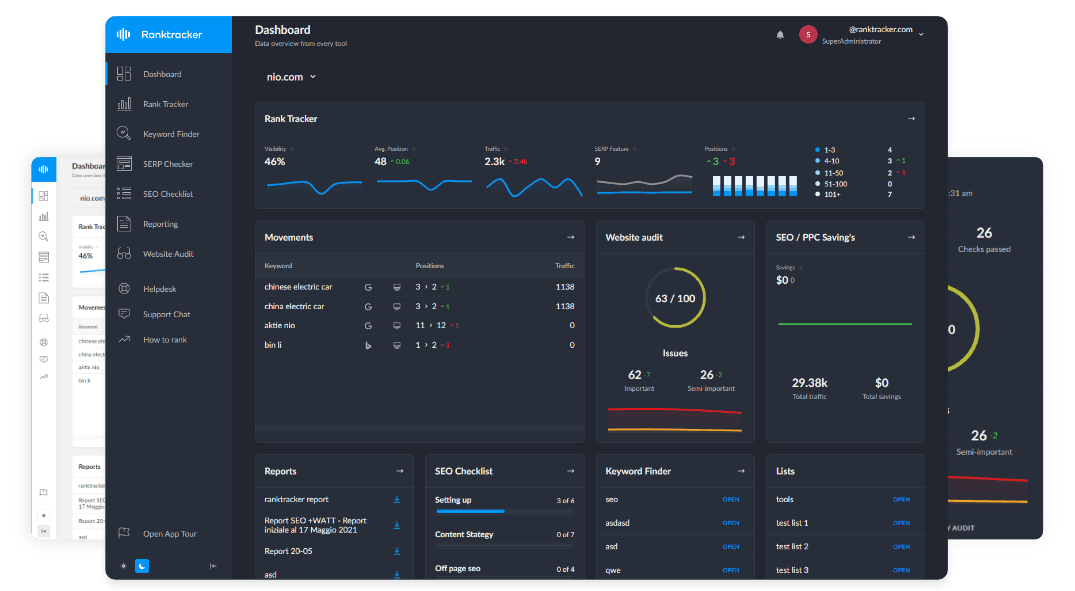Intro
When you think about user experience (UX), image size probably isn’t the first thing that comes to mind. But the way visuals are scaled, displayed, and arranged on a site directly shapes how people interact with your content.
Image dimensions affect layout, readability, and how smooth or frustrating a visit feels. An oversized photo might delay loading. A series of uneven thumbnails could throw off your design rhythm. Small choices like these can add friction without anyone realizing why.
This is why image sizing should be treated as a design decision. Not just for aesthetics, but for how the user navigates and responds to your site.
Use an Image Resizer for Precision and Consistency
 The right tool makes all the difference. A reliable image resizer gives you control over how your visuals appear on different parts of your site. It ensures that banner images, thumbnails, product shots, and icons all fit their containers without distortion or unnecessary bulk.
The right tool makes all the difference. A reliable image resizer gives you control over how your visuals appear on different parts of your site. It ensures that banner images, thumbnails, product shots, and icons all fit their containers without distortion or unnecessary bulk.
Even Google promotes optimized image dimensions as a core part of web performance, encouraging developers to serve modern, compressed formats like WebP to improve speed and user experience.
Visual resizing helps your site feel more:
-
Structured and intuitive
-
Visually consistent
-
Fast-loading and polished
Brands like Wix incorporate smart image optimization within their site-building tools to automate resizing and compression, helping users deliver better UX without complex workflows.
Images Set the Pace for How People Move Through Your Site
Photos, illustrations, and graphics aren’t just decorative, they help people understand where they are, what to do next, and what matters most. Their size can either support that process or slow it down.
For example, if an image takes up half a page but serves no clear purpose, it gets in the way. If it’s too small to see clearly, users may skip it. Consistent sizing keeps things predictable and easier to scan.
The All-in-One Platform for Effective SEO
Behind every successful business is a strong SEO campaign. But with countless optimization tools and techniques out there to choose from, it can be hard to know where to start. Well, fear no more, cause I've got just the thing to help. Presenting the Ranktracker all-in-one platform for effective SEO
We have finally opened registration to Ranktracker absolutely free!
Create a free accountOr Sign in using your credentials
Thoughtful dimensions create flow. They help users absorb information without being interrupted by awkward spacing, misaligned elements, or delays in loading.
Speed and Visual Balance Go Hand in Hand
Large image files slow down your website. And slow sites create frustration, especially for users on mobile or slower networks.
When pages take too long to load, people lose focus and exit. That affects bounce rates, engagement, and search performance. On the surface, it might seem like a tech issue. But it’s also a UX one. Speed influences how people feel while browsing.
Visual clarity and layout coherence are essential for keeping users engaged, low-quality visuals and misaligned elements can quickly drive visitors away. In fact, as outlined in 7 Common Web Design Mistakes That Hurt Your Google Rankings, problems like improper image sizing, slow loading times, and inconsistent layouts aren’t just aesthetic issues, these can significantly harm your site’s SEO and organic visibility in search results.
Resizing images properly keeps your pages light without sacrificing quality. Tools that compress files and scale them to match your design reduce the amount of data each user has to download. This leads to faster pages and a better experience.
Mobile Design Demands Smarter Scaling
Mobile screens need visuals that load fast, fit neatly, and support touch interaction. Oversized images meant for desktop layouts often cause issues when displayed on smaller devices. They might push text off-screen, trigger odd zoom behavior, or delay content from appearing.
Brands like Apple and Nike use mobile-first design and responsive image strategies to deliver consistent experiences across devices. AI-based resizing helps replicate that at scale, even for smaller businesses.
Resizing for mobile is essential. With the help of responsive design tools and multiple image versions, your site can display the right file for the right device. An image resizer helps create these versions efficiently, making your site more adaptable without extra work.
The All-in-One Platform for Effective SEO
Behind every successful business is a strong SEO campaign. But with countless optimization tools and techniques out there to choose from, it can be hard to know where to start. Well, fear no more, cause I've got just the thing to help. Presenting the Ranktracker all-in-one platform for effective SEO
We have finally opened registration to Ranktracker absolutely free!
Create a free accountOr Sign in using your credentials
Users notice when a site feels smooth on their phone. That perception builds trust. A well-sized image contributes to that feeling in a real, measurable way.
Layout Stability Matters More Than You Think
Design inconsistency makes pages feel unprofessional. Even when your images are high quality, if they differ in shape or size from one section to the next, it throws off the visual rhythm.
A service page with mismatched team photos, or a product gallery with uneven rows, creates small distractions that add up. It might not drive someone away immediately, but it weakens their confidence in the experience.
When image dimensions are consistent, layouts look structured. That helps users focus on content instead of adjusting to each page. With resizing tools, you can standardize photo ratios, crop awkward framing, and avoid last-minute design patches. This attention to alignment also makes your site easier to maintain over time. Developers and designers benefit from cleaner layout templates, and content managers can update visuals with more confidence.
You’ll notice this in many professional interfaces where uniform image spacing and rhythmic grid systems help guide the eye and reduce cognitive load.
Real-World Example: Coaching Website
Imagine a site for a fitness coach. The homepage includes:
-
A full-width photo of the coach in action
-
Three smaller icons for service tiers
-
Testimonials with client headshots
-
A blog feed with thumbnails
If those visuals come in different sizes and resolutions, the layout becomes unpredictable. The banner might overflow on mobile. Icons could appear blurred. The headshots may feel like afterthoughts.
With image resizing, each element is scaled to fit its context. The homepage feels cohesive. Pages load faster. Visitors spend less time adjusting to inconsistencies and more time exploring content or booking a session.
The goal isn’t to make every image the same, but to match each one to its purpose and placement.
Comparing Image Resizing Techniques: UX Pros and Pitfalls
| Resizing Method | UX Pros | UX Risks Without It |
| Manual Photoshop Sizing | Fine-tuned control, per-platform | Time-intensive, error-prone |
| CSS Scaling Only | Quick layout fixes | Poor image quality, distortion |
| AI-Powered Resizers | Auto-crops, preserves focal points | Slight cost, but strong UX payoff |
| Responsive Image Sets | Tailored per device & resolution | Requires setup, but pays off in performance |
Accessibility Starts with Sizing
Accessible design isn’t just about screen readers and contrast settings. It also includes visual stability and clarity.
When images load slowly or shift layout during rendering, users with cognitive or motor challenges may have trouble tracking content. If visuals push buttons or forms down unexpectedly, it makes interaction harder.
Proper sizing helps keep things where they belong. When images are scaled to match containers and load quickly, they don’t cause reflows or shift elements out of view.
Using an image resizer also allows for better control over resolution, helping prevent pixelation that can confuse users relying on zoom or screen magnifiers.
Good image handling creates a more inclusive experience. And that’s a core principle of user-focused design.
Thoughtful Sizing Elevates Content Strategy
Your visuals should support your message, not compete with it. If there’s something distracting in the background, you can simply remove the object from the photo to keep the focus where it belongs. When dimensions are off, it sends mixed signals. A large image might look like it’s the most important content on the page, even if it’s not. A small, compressed photo may appear secondary, even if it deserves attention.
The All-in-One Platform for Effective SEO
Behind every successful business is a strong SEO campaign. But with countless optimization tools and techniques out there to choose from, it can be hard to know where to start. Well, fear no more, cause I've got just the thing to help. Presenting the Ranktracker all-in-one platform for effective SEO
We have finally opened registration to Ranktracker absolutely free!
Create a free accountOr Sign in using your credentials
Strategic sizing helps you:
-
Guide user focus Standardize repeatable blocks (like blog previews or product cards)
-
Align visuals with your brand’s tone and story
Conclusion
When you take the time to size your images with purpose, you create a more stable, intuitive, and enjoyable experience for the people visiting your site.
Using a tool like an image resizer helps you control how visuals appear across different devices, improve load speed, and maintain visual harmony across your pages. Those small changes can lead to better engagement, stronger branding, and higher user satisfaction. They also create a sense of care. When your images are well-scaled and consistently placed, it shows your site is built with intention. That detail makes a lasting difference, especially on content-heavy pages.
UX isn’t always about redesigning the big things. Sometimes, it’s the behind-the-scenes habits, like how you size your images, that create the most meaningful difference.
So the next time you upload a photo, pause for a moment. Ask how it fits into the user’s experience. Then resize it to match your design and your intent.
FAQ: Image Sizing and UX
Can’t I just upload large images and let the browser scale them down?
Technically yes, but this slows down your site and increases bounce rates—especially on mobile. It also wastes bandwidth and causes layout shifts that damage UX and SEO.
Do AI-powered image resizers save time for content teams?
Yes. They automate focal point detection, responsive scaling, and compression. This means faster content publishing and fewer manual design tweaks.
Does image size really impact SEO?
Absolutely. According to Google Search Central, image weight affects Core Web Vitals like LCP (Largest Contentful Paint), which impacts search rankings.

